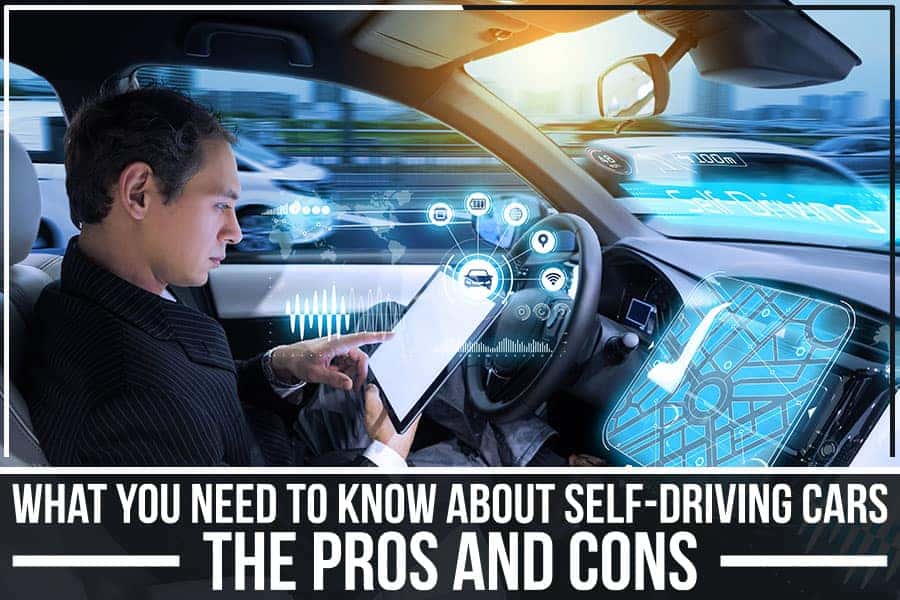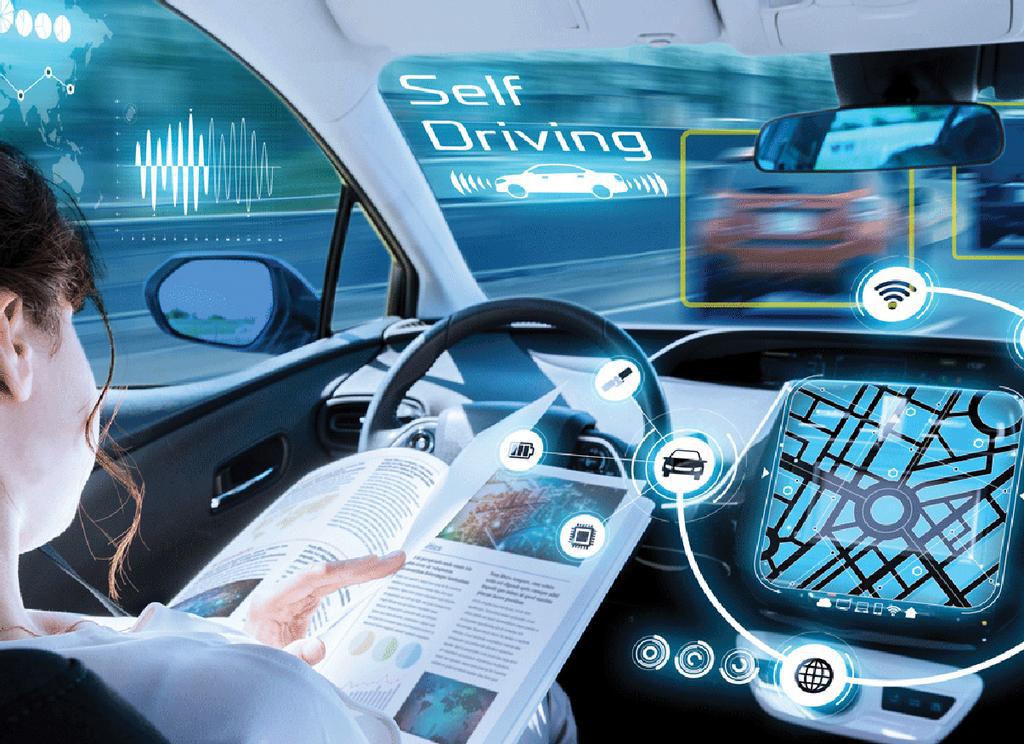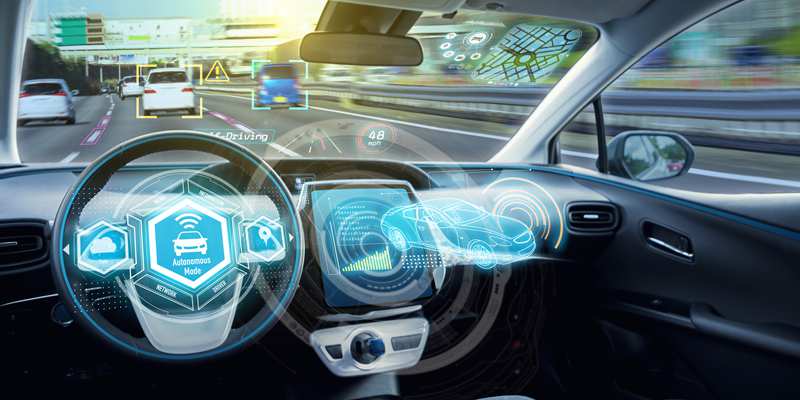Exploring the Pros and Cons of Self-Driving Auto Technology
Self-driving auto technology pros and cons sets the stage for this enthralling narrative, offering readers a glimpse into a story that is rich in detail and brimming with originality. From road safety enhancements to potential job displacement, this topic delves into the complexities of autonomous vehicles with casual formal language style that will captivate your interest.
Pros of Self-Driving Auto Technology
Self-driving auto technology offers numerous benefits that can revolutionize the way we travel and interact with our environment. Let’s explore some of the key advantages below:
Enhanced Road Safety
Self-driving cars are equipped with advanced sensors and technology that can react to potential hazards faster than human drivers. This leads to a significant reduction in accidents caused by human error, making roads safer for everyone.
Reduction in Traffic Congestion
Autonomous vehicles have the potential to communicate with each other and optimize traffic flow, leading to smoother and more efficient road systems. This can help reduce congestion, especially during peak hours, and minimize the time spent idling in traffic.
Environmental Benefits
Self-driving cars are typically electric or hybrid vehicles, which emit fewer greenhouse gases and pollutants compared to traditional gasoline-powered cars. By promoting the use of autonomous vehicles, we can contribute to a cleaner and healthier environment for future generations.
Efficiency in Fuel Consumption
Autonomous vehicles are designed to optimize driving patterns and routes, leading to more efficient fuel consumption. This can result in cost savings for consumers and a reduced dependency on fossil fuels, ultimately benefiting both individuals and the planet.
Cons of Self-Driving Auto Technology
Self-driving auto technology has its drawbacks, despite its numerous benefits. From security concerns to ethical dilemmas, there are several challenges that need to be addressed in order to fully integrate autonomous vehicles into our transportation systems.
Security Concerns Related to Autonomous Vehicle Software
Autonomous vehicles rely heavily on software and sensors to navigate roads and make split-second decisions. However, this dependence on technology opens up the possibility of cyber attacks and hacking. Malicious individuals could potentially gain control of self-driving cars, leading to accidents, data breaches, and other security threats.
Ensuring the safety and integrity of autonomous vehicle software is crucial in order to prevent such incidents.
Challenges Faced by Self-Driving Cars in Extreme Weather Conditions
Extreme weather conditions, such as heavy rain, snow, or fog, can pose significant challenges for self-driving cars. The sensors and cameras used by autonomous vehicles may struggle to accurately detect road markings, obstacles, and other vehicles in adverse weather. This can lead to decreased performance and potential safety hazards, making it essential to improve the technology to operate effectively in all weather conditions.
Ethical Dilemmas Surrounding Decision-Making in Self-Driving Vehicles
One of the biggest ethical dilemmas with self-driving cars is the decision-making process in emergency situations. Autonomous vehicles are programmed to prioritize safety and minimize harm, but this raises questions about who is responsible in case of accidents. For example, in a scenario where a self-driving car must choose between hitting a pedestrian or swerving into oncoming traffic, how should the vehicle make that decision?
Resolving these ethical dilemmas is crucial to ensure the safety and accountability of self-driving technology.
Potential Job Displacement Due to Automation in the Transportation Industry
The rise of self-driving auto technology has the potential to disrupt the transportation industry and lead to job displacement. As autonomous vehicles become more prevalent, there may be a decreased demand for human drivers, impacting professions such as truck drivers, taxi drivers, and delivery drivers.
This shift could result in unemployment and economic challenges for individuals who rely on these jobs for their livelihood. Addressing the potential job displacement caused by automation is essential to ensure a smooth transition to a more automated transportation landscape.
Impact on Urban Planning and Infrastructure

Self-driving cars have the potential to significantly impact urban planning and infrastructure in various ways. These changes can revolutionize the way cities are designed and how transportation systems operate.
Influence on City Infrastructure Design
Self-driving cars could lead to a rethinking of city infrastructure design. With the reduced need for parking spaces and smoother traffic flow, cities may prioritize pedestrian-friendly spaces, green areas, and dedicated lanes for autonomous vehicles.
Implications on Parking Requirements
- Self-driving cars could decrease the need for parking spaces as they can drop off passengers and then drive off to remote parking areas, reducing the demand for parking lots in prime locations.
- This shift could free up valuable urban space currently used for parking, allowing for the development of parks, bike lanes, or additional commercial/residential buildings.
Reshaping Public Transportation Systems
- Autonomous vehicles could complement existing public transportation systems by providing first/last-mile solutions, improving connectivity in areas with limited access to traditional transit options.
- Ridesharing services with self-driving cars could lead to more efficient routes and schedules, optimizing public transportation operations.
Changes in Real Estate Development
- Real estate development may shift towards mixed-use developments with reduced parking requirements, as self-driving cars decrease the need for on-site parking.
- Properties located near autonomous vehicle hubs or charging stations may see increased demand, influencing the location preferences of both commercial and residential developers.
Legal and Regulatory Challenges

Self-driving auto technology presents a myriad of legal and regulatory challenges that need to be addressed to ensure the safe and efficient integration of autonomous vehicles on the roads.
Current Regulations Surrounding Self-Driving Auto Technology
As of now, regulations surrounding self-driving auto technology vary widely from state to state and country to country. Some regions have embraced autonomous vehicles and have established frameworks to govern their testing and deployment, while others are still in the early stages of developing regulations.
Liability Issues in Accidents Involving Autonomous Vehicles
One of the major challenges with self-driving auto technology is determining liability in the event of accidents. Traditional liability laws may not be equipped to handle situations where the vehicle is in control, raising questions about who is responsible – the manufacturer, the software developer, the vehicle owner, or the passenger?
Challenges in Determining Responsibility in Case of Accidents
The complex nature of self-driving auto technology makes it difficult to assign blame in accidents. Factors such as human error, software malfunctions, and external conditions all play a role in determining responsibility, making it challenging to hold a specific party accountable.
Need for International Standards to Govern Self-Driving Technology
Given the global nature of the automotive industry, there is a growing need for international standards to govern self-driving technology. Consistent regulations across borders can help streamline the testing and deployment of autonomous vehicles, ensuring a cohesive approach to safety and accountability.
Closure

In conclusion, the discussion on self-driving auto technology pros and cons has shed light on the multifaceted nature of this innovative field. Whether it’s the impact on urban planning or the legal challenges ahead, the future of autonomous vehicles is a fascinating terrain to explore.
FAQ Section
What are the main advantages of self-driving auto technology?
Self-driving technology enhances road safety, reduces traffic congestion, offers environmental benefits, and increases efficiency in fuel consumption.
What are the key challenges associated with self-driving auto technology?
Security concerns, challenges in extreme weather conditions, ethical dilemmas in decision-making, and potential job displacement in the transportation industry.
How do self-driving cars impact urban planning and infrastructure?
Self-driving cars can influence city infrastructure design, change parking requirements, reshape public transportation systems, and lead to changes in real estate development.
What legal and regulatory challenges exist for self-driving auto technology?
Current regulations, liability issues in accidents, challenges in determining responsibility, and the need for international standards to govern self-driving technology.




